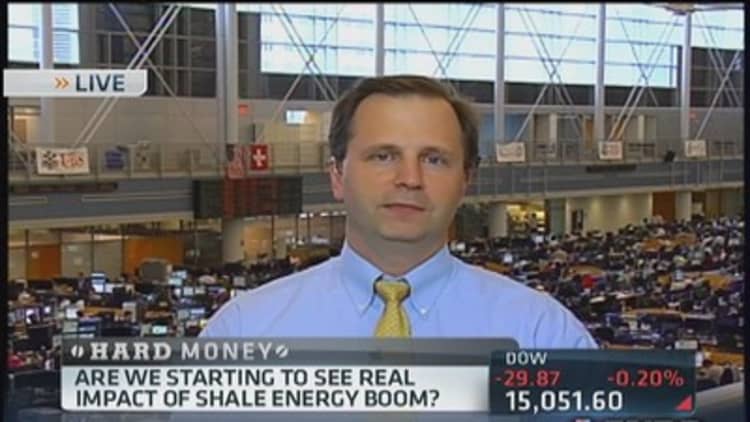The Department of Energy approved this week a fourth liquefied natural gas terminal to export to other nations, but even with the fuel much cheaper domestically than what it costs overseas, market observers differ on when, or if, the U.S. will become a major exporter.
The Maryland-based Cove Point facility owned by Dominion Resources was conditionally approved to export up to 770 million cubic feet per day (cf/d) of natgas, to countries without a free-trade agreement with America.
To be certain, the development of the U.S. natgas export market is still in its infancy, and the idea of shipping stocks abroad remains a very touchy domestic issue. Still, Dominion's export terminal is seen by observers as the latest signpost on the ever-winding road to U.S. energy independence.
The move is more symbolic than substantive at this point—Dominion's export limit is a modest slice of U.S. production, which is expected to top 65 billion cf/d by January. Yet analysts say the facility, as well as the tentative embrace of natural gas broadly by U.S. officials, is clearly a harbinger of things to come.
(Read more: Energy secretary: Emission cuts to be 'practical')
"A lot of these exports are not going to take place until 2015-2016 at the earliest," said Gary Clark, commodities strategist at Roubini Global Economics. But with Dominion joining the ranks of Cheniere Energy and Sempra Energy as international natgas suppliers, "it's the signal that a lot of people have been waiting for for a number of years."
Analysts at Goldman Sachs were less sanguine, saying in a research note Thursday that there is still "uncertainty surrounding the ability of proposed LNG export projects to attract financing, given that an 'overbuild' of US export terminals might leave global LNG markets over supplied" and depress prices even further.
Still, Goldman added that LNG exports are "one of four major drivers" that will lead to growth in domestic demand.
Other firms could benefit

trades below $4 per a million British thermal units, a steep discount to parts of Europe and Asia, where the fuel source costs more than $10. Thanks to the explosive growth of shale production, U.S. natgas is far cheaper and abundant, making it ripe for shipment to energy-starved countries abroad.
All of which makes domestic interests wary of how export demand may put upward pressure on historically low prices and hurt U.S. consumers. Natural gas is slowly displacing coal as a means of generating electricity and is credited with helping to contain costs in energy and other retail prices.
(Read more: Pressure mounts on US to export natural gas)
We're seeing more [demand] growth from power than we are from exports," said Bob Ineson, managing director of North American natural gas at research firm IHS. U.S. natgas stocks are plentiful enough to accommodate international needs that 65 percent of projected demand growth is domestic, he said.
"The supply complex is strong enough to accommodate multiple uses," he added, downplaying concerns about the impact on demand.
The push to export natural gas will help benefit small to midsized energy companies that are players in U.S. shale development, such as Apache, Anadarko, Plains All American and Chesapeake Energy. Yet Ineson says that halo effect could even extend to construction companies that will help build export terminals.
"When you have such a concentrated period of adding large facilities, the construction companies tend to do fairly well," he said.
While fracking remains controversial in the U.S., the process for extracting natural gas is far more advanced than in other parts of the globe.
"It's not a revolution but an evolution that has taken place in the market over many years," said Roubini's Clark. "You don't have that environment anywhere else."
—By CNBC's Javier E. David.


